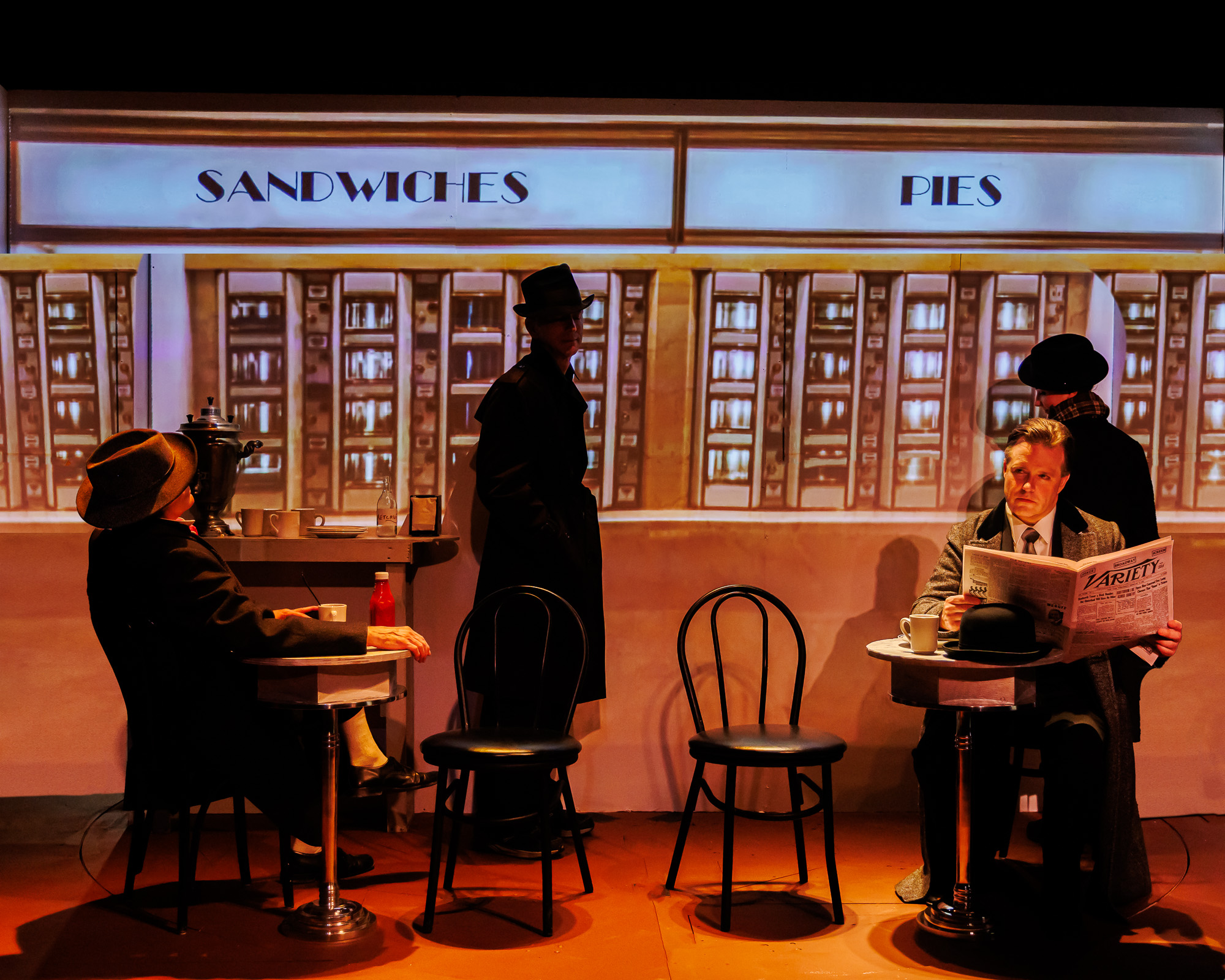Elmwood Playhouse is closing out their season with a story of a man struggling to accept the realities of his life and politics, taking place in 1937 New York as the curtain comes to a close on the golden era of burlesque. Chauncey, played by Chad Paul Hudson, plays a “Nance”; a stock character of the time. A nance, or “Nancy boy” was an over the top, effeminate gay man character. While Chauncey plays this character on stage, he is also gay offstage, something that causes dissonance in his life as he is forced to come face to face with the realities of the society he entertains refusing to allow him to live his life on his terms. Chauncey grasps desperately at the idea that this will all blow over, that the censorship and increasingly restrictive laws coming from Mayor LaGuardia are all Republican ploys to win the election.
Hudson paints a deceptively heartbreaking portrait of a man one foot in the door and one out. He wants things to stay exactly the way they always have been, and effectively blinds himself to reality. He is at times unlikeable but in exactly the way all complex people are. He is stubborn, he is in love, he is pissed off, he is a friend, a man, a performer, and you get to witness all of this. It is a beautiful display of the kaleidoscope we all hold within us, in a time where Chauncey’s kaleidoscope is reduced to a single color.
Ned, a young man from upstate New York that has come to the city seeking freedom to explore his sexuality, is played by Aaron Newcome. Newcome has all the roughness of a baby duckling in this performance and it is the yin to Chauncey’s yang. Standing several inches above Hudson, the two curve together in the sweetest of ways, gently swaying in tandem on stage.
Efram, played by Andrew Lionetti, is the manager of the Irving Place theater where Chauncey and the other dancers work. Lionetti is a man constantly on the go in this production; I’m not sure I can count all of his exits and entrances. He maintains his energy well, so much so that it isn’t until later reflection that you realize exactly how much work all of it must have been.
Joan, played by Sam Snyder, might as well have descended onto the stage in a frothy pink bubble Glinda style. Her joys lights up the stage and her delight at indulging in ginger ale can make even the hardest heart melt.
Sylvie glides in on an oil slick, a hammer and sickle in one hand and pasties in the other. The Communist burlesque dancer with a soft spot for Chauncey is played by Tiffany M. Card as the most endearing Communist I’ve seen.
While Chauncey displays sexual orientation based caricature, the third and final dancer Carmen, played by Candace Lynn Matthews, portrays a racial based caricature that is played up for more sexual motives than Chauncey’s. When she flirts onstage and off, Carmen uses an exaggerated Latin-American accent, but immediately drops it when she realizes Ned is playing for the other team. Matthews’ performance as Carmen was the glue that kept the gang of dancers together, especially with Joan and Sylvie being on opposite ends of the spectrum.
A shout out to Liam Thomas as well, the stoic stagehand perched on a barstool throughout the production. Though he might not have had as many lines as the rest, he made it up with a few cheeky looks at the burlesque dancers leaving the stage, some well timed curtain drops, and a few sneaky swigs from his flask.
The costumes are a feast for the eyes, every scene an absolute portrait. Janet Fenton and her team of seven (that’s right, seven) dressers should win an Olympic medal for the preposterous amount of 30 seconds or less costume changes. Even with these quick changes, Fenton did not leave out a single detail. I don’t want to spoil anything, but keep your eyes out for coconuts, balloons, wigs and feathers (oh my!). According to Fenton, every burlesque costume was built for this show. If you aren’t familiar with theater, this is highly unusual. Most costumes are pulled from storage, bought new, or borrowed from other theaters. Fenton dismantled old gowns no longer being used as costumes due to age or wear and tear, and created new costumes from them in order to get just the right patina on the fabrics.
Alan Demovsky, the director of The Nance, created a show that stripped away my expectations with a tight knit cast that gave me food for thought amongst the laughs, the feathers, and the smooches. The behind the scenes team must be just as tight as the cast, with every prop, lighting, sound, and projection going off without a hitch. Also – if you’re a fan of puns, dad jokes, outright gags and classic humor, run, don’t walk to the ticket booth.
And call me a prude, but I appreciated the lack of outright nudity in the show. Everything is hinted at or left up to the audience’s imagination, and I for one was happy about it.
Ever since I left the theater, I have been thinking of the question The Nance seemed to beg of me – how does our society rely on the caricaturization of the ‘other’ to laugh at when, suddenly, our society comes face to face with the kaleidescope? While The Nance asks this question, it won’t spoon feed you the answer. I’m still thinking about my answer, days after seeing the show. Go see The Nance at Elmwood Playhouse and see if you can find the answer for yourself. Tease the season, after all.


You must be logged in to post a comment Login